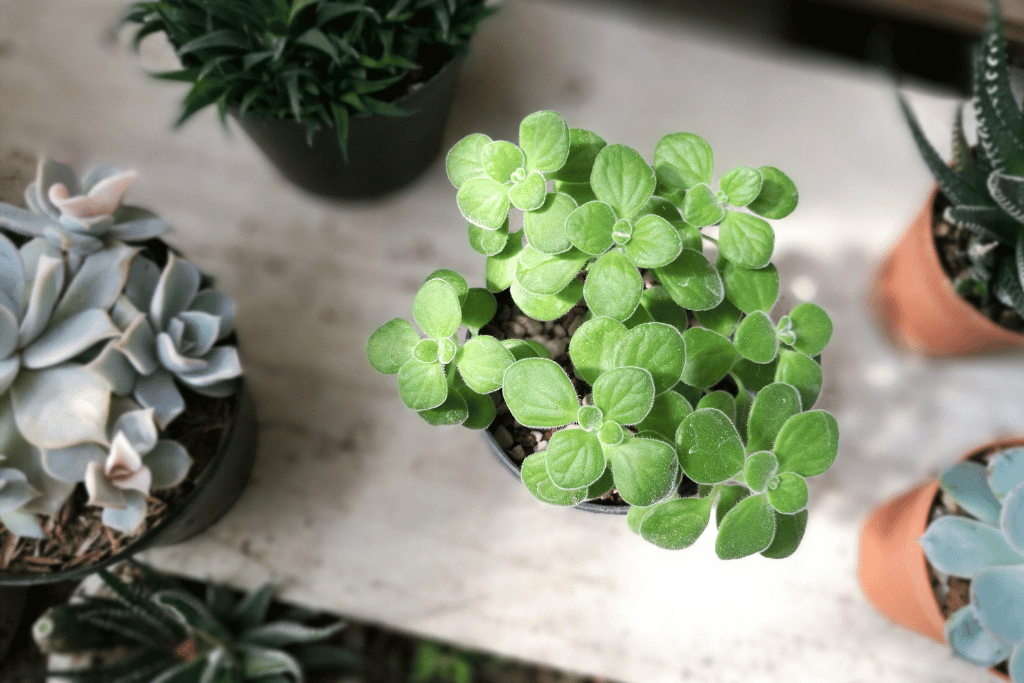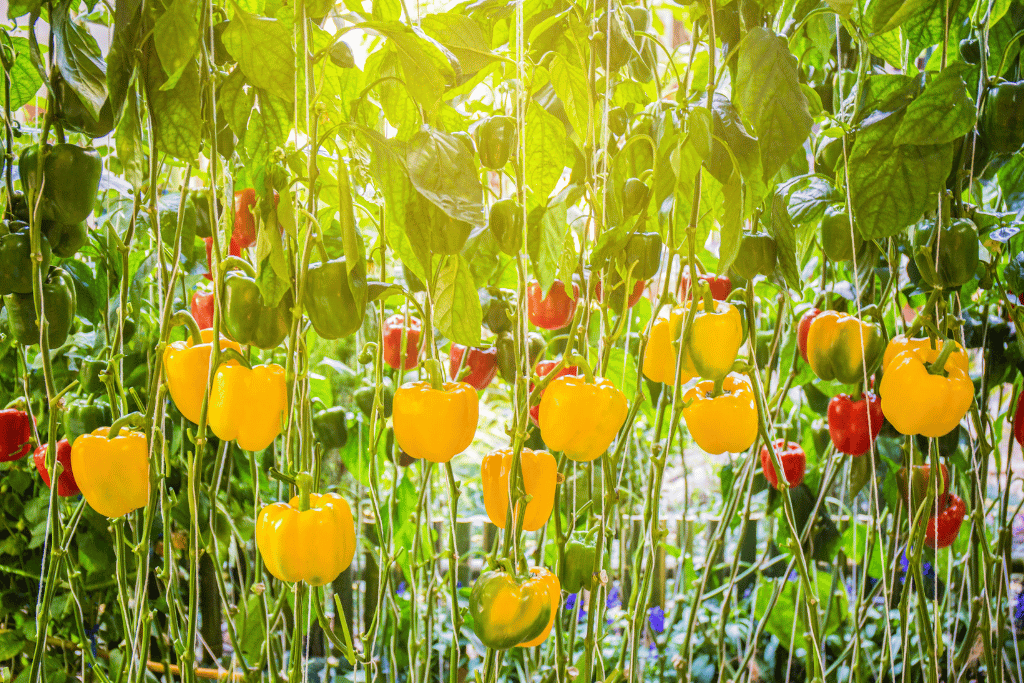Orchids are notorious for being quite picky with their conditions; they need a good amount of light, specific temperatures, the right balance of watering and sufficient fertilizer. Without these, you’ll find that your orchid may begin to slow down in growth or even wilt. If you’re wondering, ‘why is my orchid wilting’ your problem likely begins with the factors listed above.
Some of the most common causes for orchids to wilt are too much water or too little water. Dehydration will kill your orchid very quickly, causing the stems to brown and the leaves to turn yellow. Overwatering can also contribute to this; it will rot the roots of the orchid and cause it to wilt. It’s good to find a proper balance of the two – orchids should only be watered around every 7-10 days.
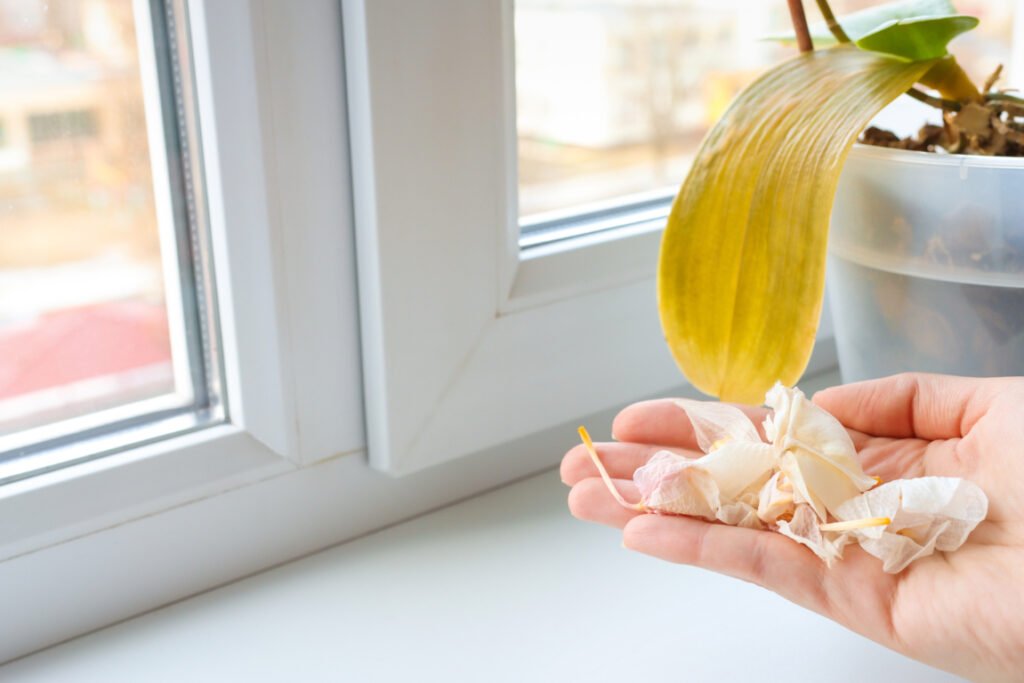
Below, I’ll list some of the most common causes of why your orchid could be wilting, what you can do to prevent it and how to treat it!
Why Is My Orchid Wilting?
Underwatering
I think we’re all guilty of this. When I first got an orchid, I was told they should get 2-3 ice cubes every few weeks. There are quite a few things that could be improved with this advice. First, orchids should be watered thoroughly around every 7-10 days. Secondly, you shouldn’t use ice cubes to water your orchids. The cold temperature can shock the orchid’s roots, leading to the death of the orchid. Think about it – orchids are from tropical climates. They’re not going to be experiencing those temperatures in nature.
We can prevent underwatering by simply paying attention to the moisture in the soil of the orchid. I like to poke my finger an inch deep into the substrate to check how wet the soil is. I’ll hold off on watering if it’s still soggy until it dries out slightly. However – it would be best if you never let the orchid’s soil become completely dry. This will kill the orchid very quickly!
Common signs of underwatering in orchids include the browning or yellowing of leaves and the death of roots. You may find that the roots are becoming hollow or flatter, which is not a good sign. Orchid roots can usually dictate the overall health of the plant; if they’re brown and mushy, this is also a bad sign. You’ll want to prune these roots off as soon as possible, sterilizing your tools between each cut to prevent the spread of pathogens.
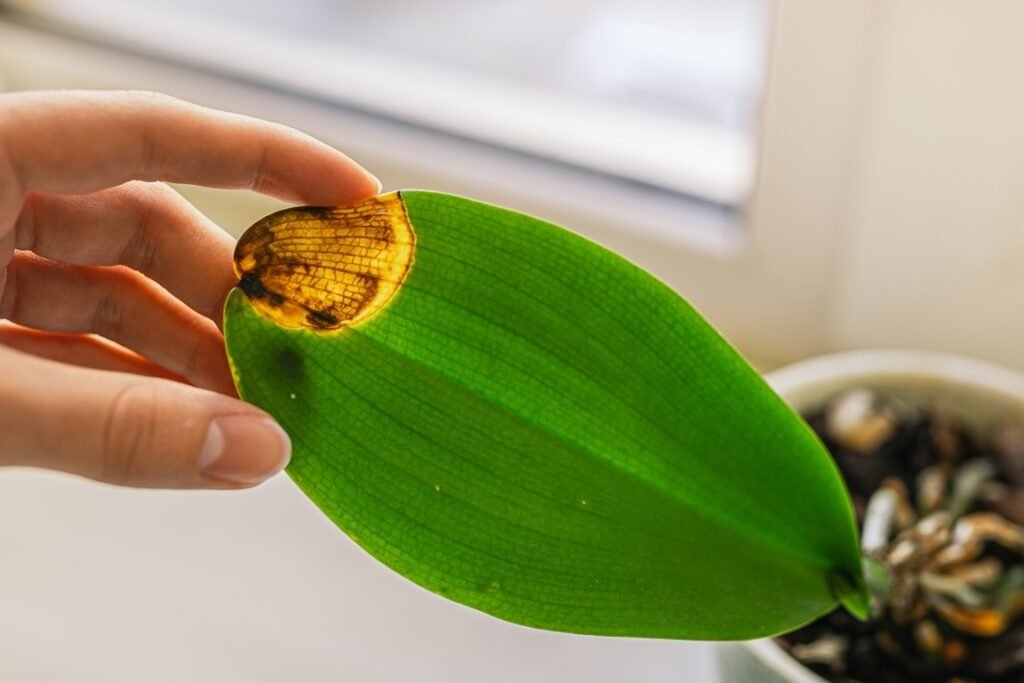
If you believe that you have underwatered your orchid, the best thing you can do is to submerge the orchid in water for around a minute or two. This will ensure that plenty of water gets to the roots of your orchid, helping it recover. Once you have finished submerging your orchid, make sure you drain out any excess water from the pot. Orchids’ roots shouldn’t be kept in standing water. Otherwise, this will rot them and cause further wilting.
Top Tips for Watering
- Pay attention to the soil’s moisture. As I said before, I like to check the soil’s moisture before watering. It would help if you didn’t water orchids (or any plants) on a schedule, as their water demand will constantly be changing depending on the temperature and the environment they are in. You’ll find that some of your plants may have a higher water demand than others and, therefore, should be watered more frequently.
- Add a mild dose of fertilizer regularly. If you’re not feeding your orchid regularly, you’ll find that it’s going to become quite unhealthy and refuse to put out any flowers or put on any new growth. Fertilizer is vital in keeping plants alive and healthy – you can get plant feed from any garden center online or online for a reasonable price!
- Be thorough! When I realized that I shouldn’t be using ice cubes to water my orchids, I moved on to watering them normally. However, they weren’t getting enough water. When you water your orchids, please don’t give them minimal amounts of water. Make sure they’re watered thoroughly. Otherwise, they’ll dry out quickly.
Overwatering
Hard to find a balance, isn’t it? Unfortunately, overwatering is a problem we must look out for in orchids. Watering every day is typically overkill for orchids; instead, they should be watered around every 7-10 days. When they flower, you might find that you might have to water them more frequently. This is because when plants bloom, their water demand will increase to keep up with producing enough energy to keep those flowers going and produce seeds.
To prevent yourself from overwatering your plants, get rid of any schedule you have for watering your plants. As mentioned before, it’s not good to have a schedule because some of your plants will have variable water demand and won’t be able to keep up with the schedule. Another way to prevent yourself from overwatering your orchid is by checking the soil’s moisture before watering. You should never water your orchid if the soil is still soggy. Otherwise, this will rot the roots and prevent oxygen from getting to them, causing them to die and the orchid to wilt.
Common signs of overwatering include leathery and limp leaves. You might also find that the leaves start to turn yellow, and any new leaves produced may look pleated. Leaves are a good indicator of problems in your orchids, so it’s always good to check over the leaves every once in a while to ensure your orchid is healthy. The roots may also turn mushy and brown, which is a bad sign for your orchid.
If you think you have overwatered your orchid, the best thing to do is to review how you are watering the orchid and take steps to prevent this. Don’t water the orchid again until the soil begins to dry out. I would recommend having a look at the roots to check if any of them have turned mushy and brown. These roots are dead and should be removed as soon as possible. Make sure to sterilize your pruners before every cut to prevent the spread of any pathogens when doing this.
Top Tips for Preventing Overwatering
- Make sure your orchid is getting enough light. If you’re watering your orchid every week or so and finding that the soil is still quite soggy, likely, your orchid may not be getting enough light. Plants in low-light conditions won’t take up as much water. Therefore we must ensure that with orchids, we give them enough sunlight per day. For orchids, it’s advised that they should be given filtered or indirect light for at least six hours per day. I like to keep mine on a north-facing windowsill, which provides them with enough light.
- Keep your orchid in warm conditions. Orchids prefer temperatures between 12-23 degrees, and if you keep them in temperatures lower than this, you might find that they will begin to wilt or their water demand will start to lower. This might be another reason the soil is constantly staying wet, so make sure that they’re in a warm enough position.
- Check the soil’s moisture. As I’ve mentioned many times before, always check the soil’s moisture before watering your orchid! It’s the simplest way to prevent overwatering, and it takes a few seconds.
- Pot your orchids in the correct soil medium. Orchids do not like heavy mixes such as compost, and they will react quite badly to this. Instead, opt for a free-draining and airy mix, such as perlite, sphagnum moss, lava rock or stones. This will hold on to less water, meaning that it’s a lot easier to prevent overwatering when using these mixes. Compost will hold onto water for a long time compared to these substrates.
Temperature
We all like to keep warm, and so do orchids. Coming from tropical forests, orchids love a temperature between 12-23 degrees. Any lower can damage the orchid and cause it to wilt, so ensure that you keep them in a warm place in your house. There are a few ways to ensure your orchid is getting the correct temperature and to prevent shock, so let’s go over them.
You could invest in a thermometer to ensure your orchid is getting the right temperature. However, it’s pretty easy to tell if your room is warm enough for orchids to live in. As long as you’re not freezing or sweating buckets, it’s likely that your orchid is going to be able to survive in that room. You’ll have to consider other factors, such as humidity and light, though.
Another way to ensure your orchid gets the right temperature is to ensure they steer clear of any windows. I keep my orchids on a windowsill but never let their stems touch the window. Cold windows can be the demise of orchids, as when the stems touch them, this can cause them to wilt and shock the orchid due to the low temperatures. So, if you’re keeping your orchids on a windowsill, ensure they don’t touch it!
Going onto positioning now – ensure that your orchid is kept from any doors or windows that are opened frequently. Sudden temperature drops can shock an orchid and cause it to wilt. Orchids aren’t used to sudden temperature drops in nature, so they definitely can’t handle it in your home.
If you believe that your orchid might’ve been shocked by the temperature, it’s best to move the orchid away from any sources that could provide a drastic drop in temperature. Move the orchid into a room with high humidity, a good amount of light, and a warm temperature and keep on top of watering. Don’t let the orchid dry out or get too moist constantly. It’s best to let orchids which have been damaged by the cold dry out slightly. Hopefully, your orchid should be on the path to recovery after a few weeks when you’ve done this.
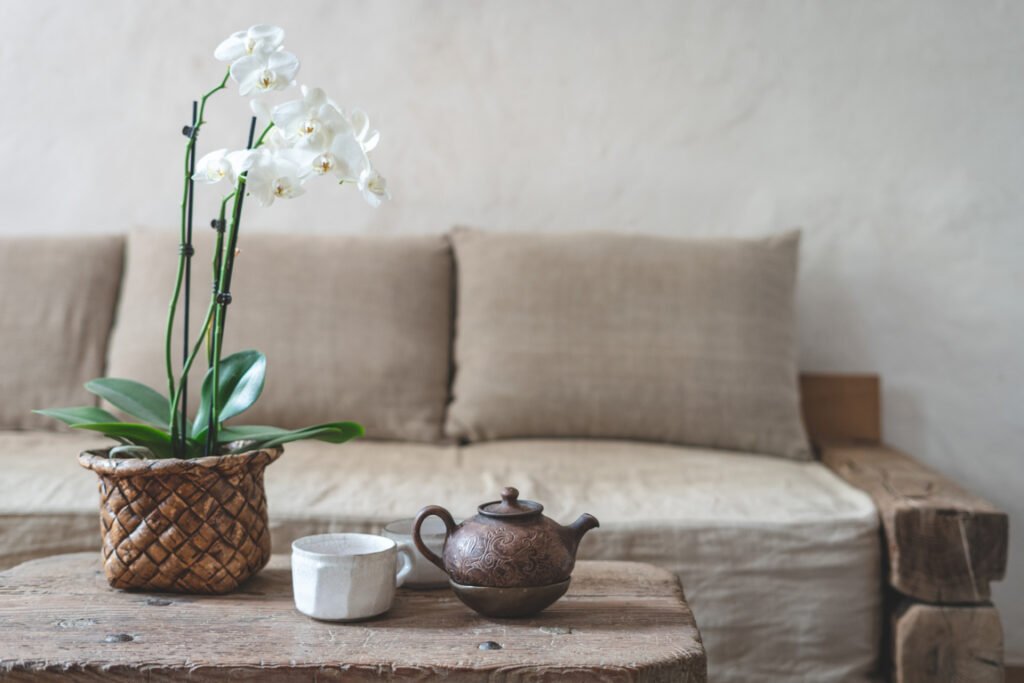
Suitable Positions For Your Orchid
- A bright living room or foyer
- A bedroom with a window facing south or east
- A light dining room
- A north-facing windowsill
End of the Natural Life Cycle
When we’re talking about flowers wilting, it could be due to the fact that they have reached the end of their natural life cycle. If it’s the flowers on your orchid wilting, pay attention to this section!
There can be different reasons for your orchid’s flowers to wilt, such as the species, watering, light, temperature or pests. In this section, we’ll talk about the flowers coming to the end of their natural life cycle. Depending on the species, some flowers on orchids may only last a few weeks, while some can last a few months. The most common type of orchid people buy is the Phalaenopsis (Moth) orchid, and its flowers can last for around three months. Below is a list of species of orchids and how long they flower for!
- Phalaenopsis – 3 months
- Cattleyas – 1.5 – 3 weeks
- Oncidiums – 4 weeks
- Dendrobiums – 4 weeks
- Miltonias – 4-8 weeks
- Cymbidiums – 8-10 weeks
- Stanhopeas – 3-4 days
- Vandas – 6-8 weeks
- Paphiopedilums – 6-8 weeks
- Odontoglossums – 6 weeks
If your flowers have come to the end of their natural life cycle – don’t fret! If it’s a Phalaenopsis orchid, you might get another bloom out of it in the year. Some other species may flower multiple times a year, so do your research before buying a particular species. Think about what you want for it – can you keep it with your conditions, how long do you want it to flower for, and how many blooms do you want per year?
Humidity
Humidity is often mistaken for watering – but it’s not the same. Humidity refers to the air’s moisture, and orchids like to have high-humidity environments depending on the species. Some orchids may not be able to handle lower humidity conditions and, therefore, may begin to wilt.
Ideally, orchids like humidity of around 60-80% – but this is most likely unachievable in houses. You’ll find that the paint on your walls may begin to chip if you keep your rooms at this high humidity. Don’t worry, though; your orchids will be fine as long as they have around 40-50%. If you want to increase the humidity around an orchid, buy a humidifier or a humidity tray.
I opt for the humidity tray. These are simply trays filled with something such as grit which is watered every few days. The light will evaporate the water, causing the air to become more humid around the orchid, helping it. Humidifiers seem a bit too advanced for me right now, and my orchids seem to be doing fine without one!
Final Thoughts
It’s never nice to see an orchid wilt or any plant. However, it’s a good learning experience. I’ve had many orchid wilt and die on me before, but it’s helped me to learn what I’ve done wrong and how I can prevent it from happening with my next orchid. If you haven’t killed any orchids yet – well done! I envy you.


